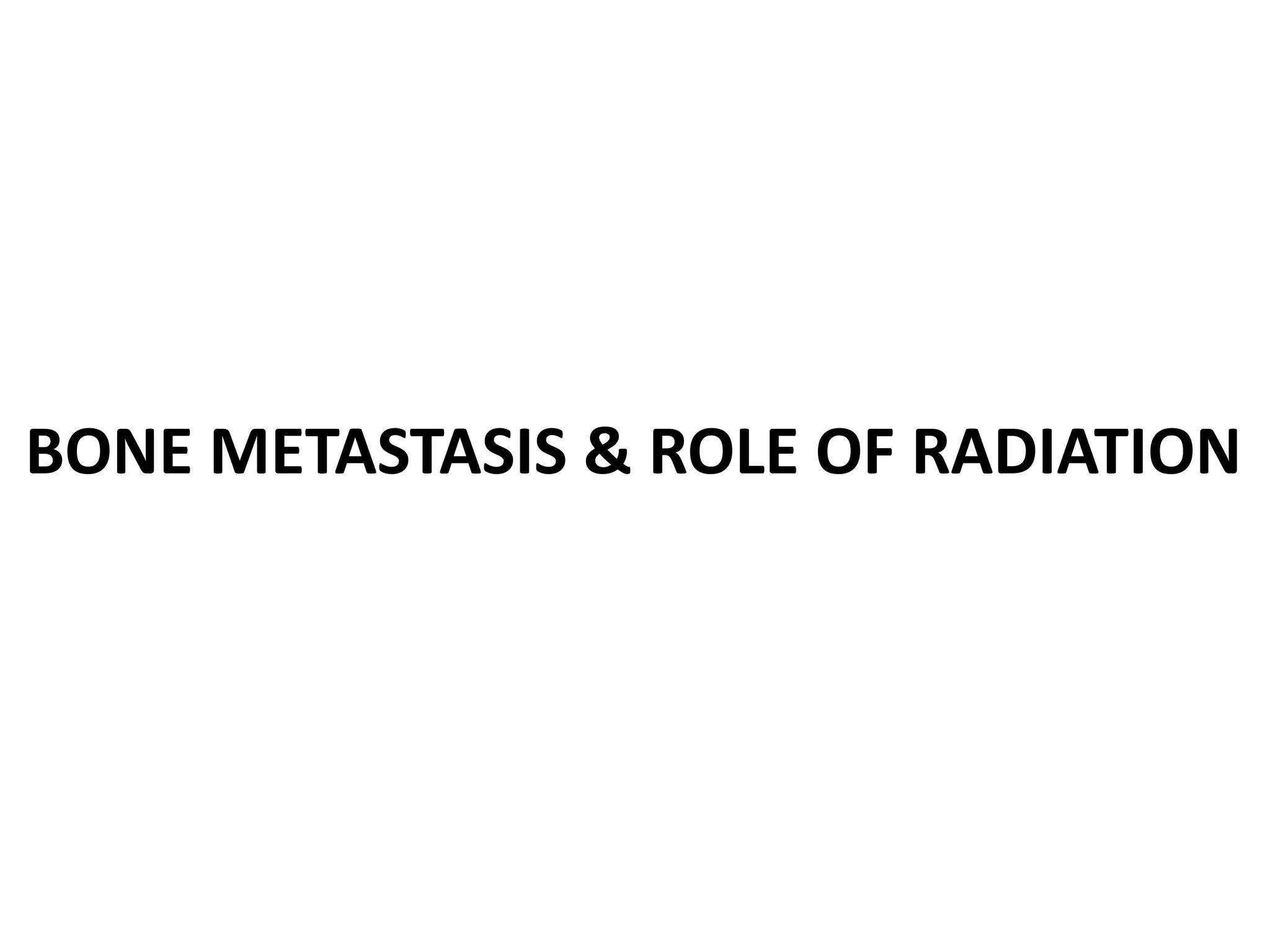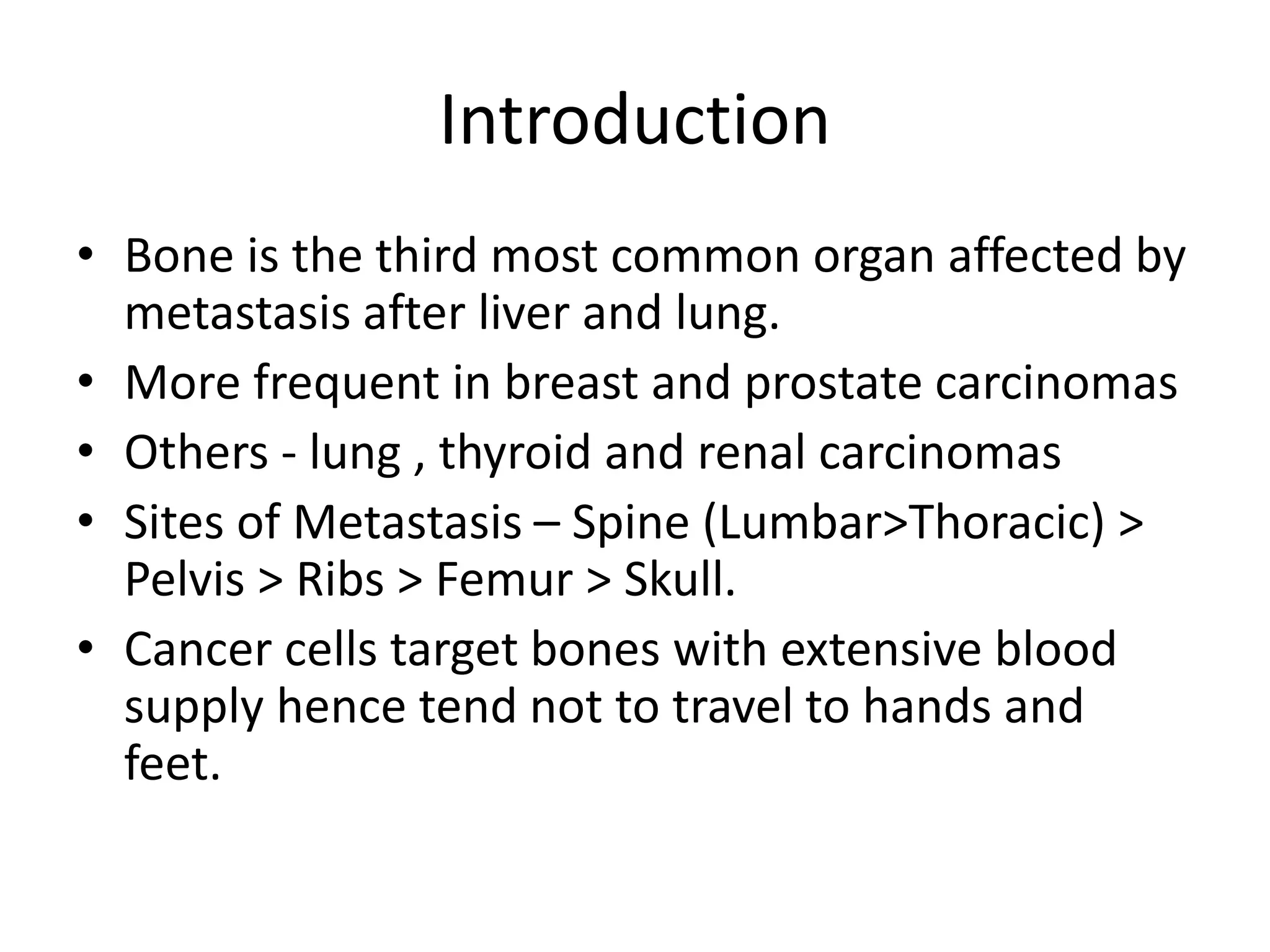Bone is commonly affected by metastasis. Radiation therapy is effective for relieving bone pain from metastases. Shorter fractionation schedules like single 8 Gy fractions provide pain relief but have higher retreatment rates compared to longer schedules like 30 Gy in 10 fractions. Newer techniques like SBRT and hemibody irradiation also effectively palliate bone pain with acceptable toxicity. Bisphosphonates combined with radiation can further improve pain relief and increase bone density. Surgery to stabilize fractures is recommended for high risk or impending fractures to allow early mobility.



































































![• Patchell et al. (2005): Prospective randomized trial of surgery with post-op
RT to 30 Gy vs. RT alone to 30 Gy. Surgery patients regained ability to walk
more often (62% vs. 19%), retained ability to walk longer (122 vs. 13 days),
and required less steroid and pain medication. Improved survival with
surgery (126vs. 100 days).
• Rades et al. (2009): Prospective nonrandomized trial of 265 patients with
metastatic spinal cord compression treated with short (1 or 5 fxn) vs. long
(10, 15, or 20 fxn) course RT. Longcourse RT achieved higher 1-year LC 61
vs. 81%. Motor function improvement (~35%) and OS (~25%) similar.
Better OS with better KPS, no visceral mets, 1–3 vertebral mets, ability to
ambulate, and use of bisphosphonates.
• Rades et al. (2008): Retrospective review of 124 patients reirradiated for
in-field recurrence of metastatic cord compression. Motor function
improved in 36%, stable in 50%. No radiation myelopathy at 11 months
median follow-up with 24% of patients receiving cumulative BED < 100 Gy,
including both courses of RT. [BED = n*d*(1+d/ab); n = # of fractions;d =
dose per fraction; ab = 2].](https://image.slidesharecdn.com/0bonemetspresentation-180114064625/75/BONE-METS-MANAGEMENT-68-2048.jpg)

